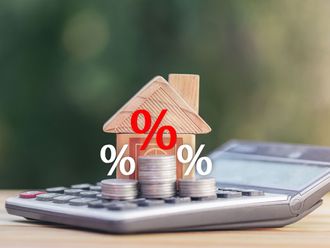In recent months, there has been one question that has dominated the real estate circles: How much have house prices actually fallen by? With a plethora of indices released by research houses, it has become increasingly difficult to gauge the impact of price reduction, with estimates ranging from a fall of 6-30 per cent for the year.
Whilst anecdotal evidence suggests that the fall is closer to the latter figure, a closer look at real estate index methodology is relevant as it impacts not only performance measurement, but possibly also serves as a signal if the markets have overshot to the downside. Or if there is to be a further price reduction.
In recent years, a number of indices have appeared in the housing market as more people have looked to it for investment opportunities. The quest however, remains as to what is a good index?
Amidst a variety of performance numbers, investors have been left scratching their heads when analysing the impact of price performance. Unlike equity indices, each house sold has certain unique attributes, and this lack of homogeneity necessitates a “smoothening” process of prices.
It is this process which in turn contaminates price measurement, and thus needs to be scrutinised. When dissecting the indices, a few obvious criticisms stand out.
Firstly, there is the problem of new homes, which typically tend to be more expensive than equivalent older homes. Not factoring for this adjustment tends to make the indices naturally biased upwards in terms of price measurement.
In a market like Dubai where new construction abounds, this amplifies the upward bias as a greater weightage is placed on these sales, and thus understating the impact of price declines.
Furthermore, all sales are treated as if they were single sales in these median price indices. However, many homes sell multiple times in the time period being measured and this information is often ignored.
Factoring for repeat sales through regression analysis removes a statistically large enough data sample, and on average reduces price performance by more than 2 per cent over the previous year.
The problem is further compounded when some indices include listed prices rather than transacted prices, which on average overstate prices by a further 2.5 per cent percentage points.
Listed prices are used as proxies, especially in areas where transaction volumes are infrequent and irregular. However, this proxy also serves to bias price performance upwards, thus further reducing the accuracy of the actual price gauge. The final issue is the impact of payment plan-related sales on price performance. In ready units, there have been a number of increasingly imaginative payment plans stretching out over years.
However, these sales cannot be equated to equivalent home sales that are done at similar prices without payment plans. An accurate index needs to factor into account the time weighted cost of money into the prices.
The lack of such a statistical methodology in current median price indices further amplifies the upward biases that are inherent in the structure.
An accurate, statistically relevant and predictive index is one that accounts for the biases that have been listed above. In developed markets, the Case-Shiller index, and the BMN methodology used by the OFHEO incorporates such biases to present a more accurate gauge of the markets.
When such an auto regressive model is applied to Dubai’s real estate market, it appears as if the markets have already corrected by 28 per cent since the markets peaked in late 2013.
What does this state about the health of the markets? Well, for one, a more accurate price gauge indicator serves as a tool for institutional investors to ascertain whether the markets have overshot to the downside.
A series of sub-indices by residential community (which is what the overall auto regressive index is based on) further allows for analysing inter-community price differentials and replacement value analysis, as well as enabling such investors to capitalise on such anomalies.
It allows for a more accurate pricing information dissemination, enabling individual as well as institutional investors to make decisions in a more informed manner. Such rigorous statistical index metholdogies have already been incorporated in developed markets, and in Dubai, it is likely that these are being used by sophisticated investors to understand price and investor behaviour.
It is the widespread dissemination of such indices that will serve for a more accurate representation of the micro and macro market structure for the realty market and serve as a further milestone towards greater maturity.
This enables for the entry of international institutional money flows from an investment perspective.
— The writer is managing director of Global Capital Partners.











